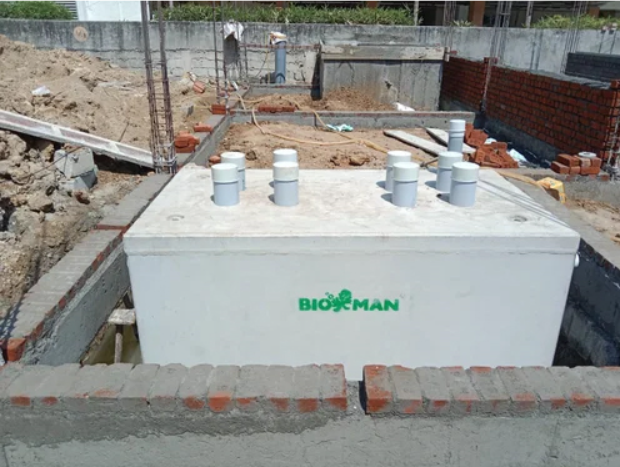Traditional septic tanks have been employed for decades, but they pose a long list of troubles regular maintenance, annoying odors, pollution to groundwater, and huge increase of operational expenses. When you are planning to build a new residence, renovating existing apartments, or managing a commercial building, it may be time to think about a more eco-friendly and efficient solution: the biodigester septic system.
This article explores how biodigesters are transforms on-site sanitation, what advantages they have over traditional method of sanitation, and what to look for when comparing septic tank prices.
What Is a Biodigester Septic System?
A biodigester septic system is a new technology for wastewater treatment that employs anaerobic bacteria to break down human waste into gas and water. In contrast to septic tanks, which simply hold and settle waste partially, biodigester septic tank system actually digest organic materials, leaving treated water that can be safely percolated into the ground or recycled for landscaping.
- Less upfront cost, size and capacity dependent.
- Low operational and maintenance expenses in the years ahead.
- Long life (10–20 years), providing long-term value.
In all but a few circumstances, a bio septic tank with biodigester will pay for itself within 2–3 years through reduced maintenance costs, water recycling, and fewer service disruptions.
Who Should Use a Biodigester System?
The biodigester septic system is perfect for:
- Individual homes and gated communities
- Schools and colleges
- Resorts, hotels, and restaurants
- Hospitals and clinics
- Government and rural sanitation projects
- Factories and construction sites
- If you’re designing a green building or looking to upgrade sanitation in an existing structure, this system meets both environmental and regulatory standards.
Installation Is Quick and Easy
Bio Tank with biodigester installation is relatively simple and can usually be completed within 2–3 days. It involves:
- Excavating space based on tank size
- Installation of the prefabricated or bespoke biodigester
- Connecting inlet and outlet pipes
- Backfilling and topping with soil
After installation, the system operates quietly and on a self-run basis—no need for manual operation.
Conclusion
Conversion to a biodigester septic system from the conventional septic tank is not only an upgrade in sanitation—it’s a lifestyle upgrade compatible with sustainability, health, and future cost savings. Although the cost of a biodigester septic tank might appear higher at the onset, the lower maintenance, longevity, and the eco-friendly advantage make it a wiser and better investment.
If you’re planning a construction project or simply tired of maintaining your old septic tank, now is the time to embrace this eco-friendly revolution.



